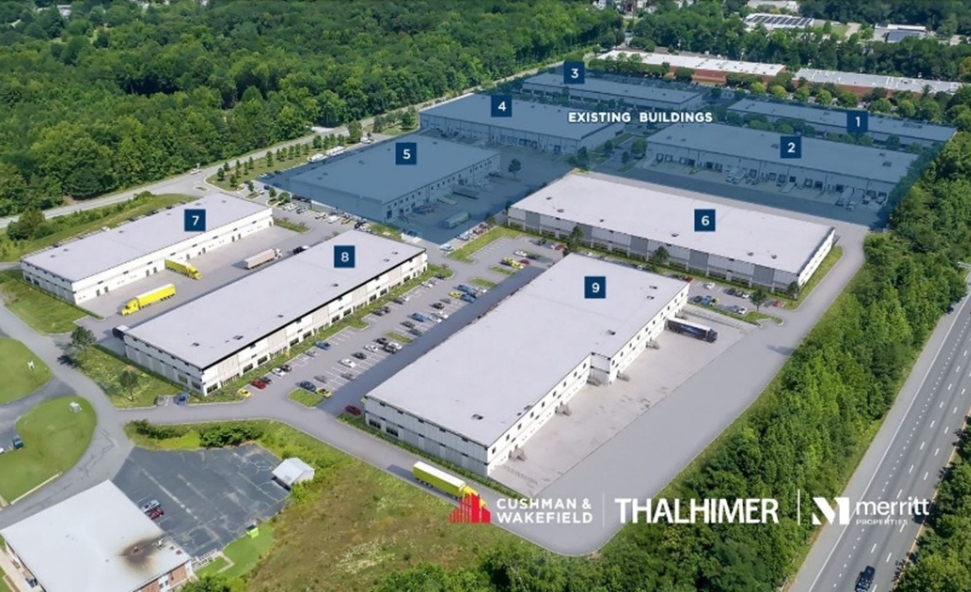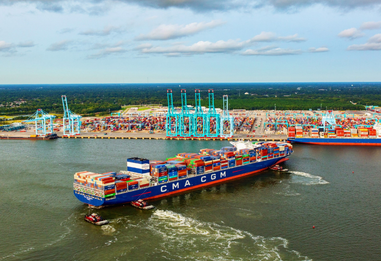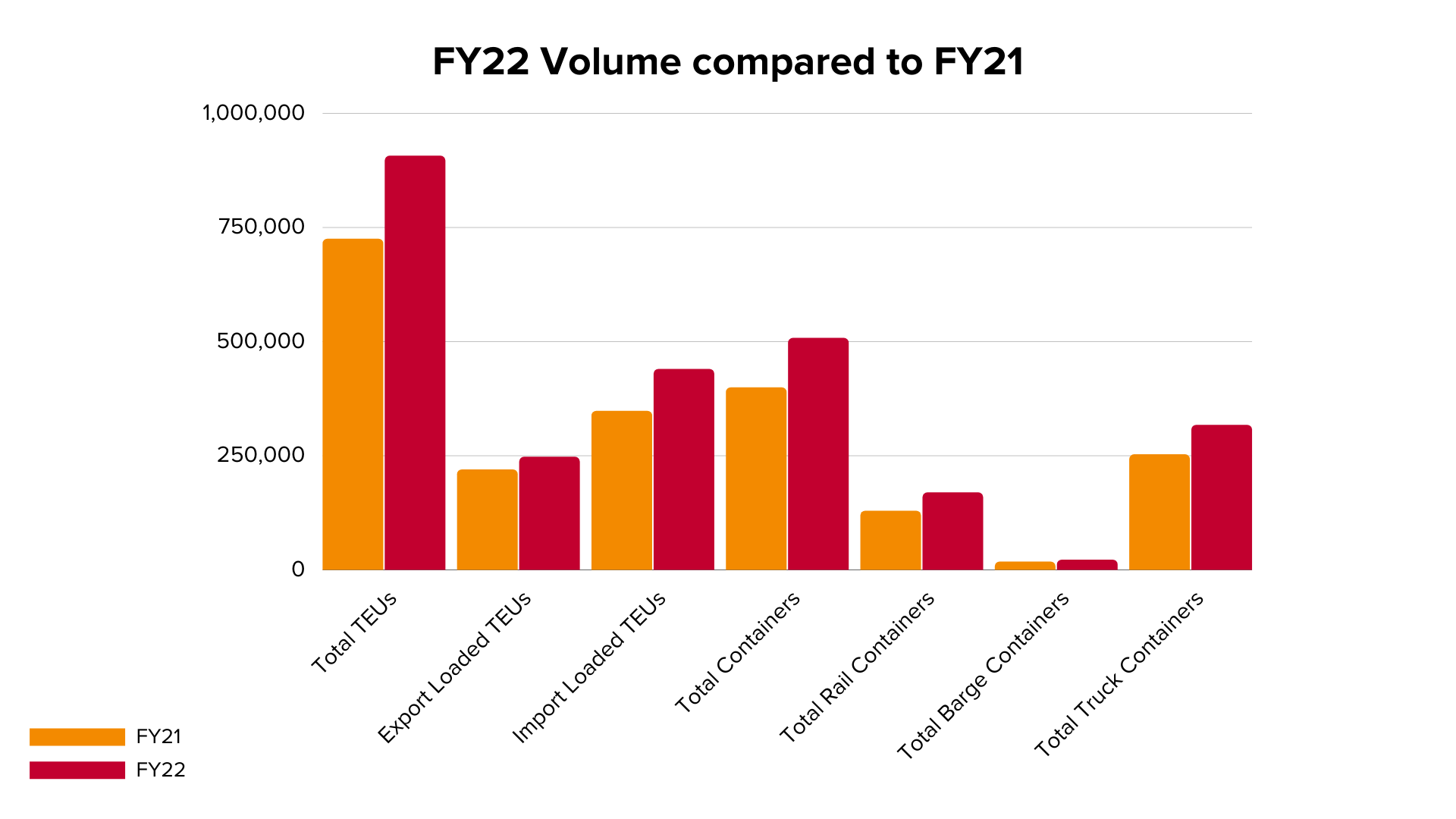
Blog
Blog | 5 min read
December 8, 2021

Congested ports are rocking the nation’s supply chain. As the holidays approach, consumers are ordering more goods than ports on the West Coast can process. However, The Port of Virginia’s strategic location at the midpoint of the East Coast has enabled the Richmond Marine Terminal — and Greater Richmond companies — to stay ahead of the crisis.
According to The Port of Virginia, current congestion levels are caused by several factors: manufacturing issues overseas, delayed ships, late arrivals for containers and vessels, empty store shelves, delivery delays, limited truck, rail and warehousing capacities and lastly, a shift in consumer behavior. Consumers are increasingly opting to order directly from end-product manufacturers or wholesalers and distributors as opposed to shopping retail.
Stephen Edwards, CEO and executive director of the Virginia Port Authority, said, “We are handling record volumes with no congestion issues. The productivity at our berths, gates and rail ramps is exceptional right now and we are delivering real value to our customers and the cargo owners choosing The Port of Virginia.”
The Port of Virginia has avoided congestion factors for several reasons. Over the last several years, the Port heavily invested in new infrastructure, technology and equipment that allow it to increase productivity and efficiency. And the Port’s location along mid-point of the East Coast and its 50’ deep channel enable the Port to move cargo quickly by in-land barge service, rail and highway access.
Despite the torrent of news stories surrounding port congestion, news about the Port of Virginia is consistently positive. Infrastructure investments since the Port’s inception have prepared the Port and the region for success.
One of the Port’s priorities was to modernize its terminals to allow for future increased capacity. In the last four years, the Port invested nearly $1 billion and doubled its capacity. The Port of Virginia is growing faster than any other port on the East Coast. Continued investments include upping the number of ship to shore cranes and shuttle trucks to increase lift capacity. As shown in the graph below, The Port of Virginia’s volume just five months into Fiscal Year 2022 has already surpassed the Port’s volume in 2021 with an increase of 25 percent thanks to new and continued investments.

According to Edwards, “We are growing in multiple areas and the key to continuing this trend is to emphasize delivery of service and market the Port for its all of its capabilities. There is no congestion here and the industry is taking note of our effort to ensure consistency across the operation.”
The Port of Virginia is comprised of six terminals. Travel up the James River from the Port and you will find the Richmond Marine Terminal, a 121-acre terminal able to handle up to 60,000 TEUs. The Richmond Marine Terminal contains more than 300,100 square feet of covered warehouse space and offers a 1,570-foot-long wharf for berthing ships and access to I-95. The terminal also has rail service on inducement, or on an as-needed basis.
After imports are unloaded at the Port, they need to be stored and sorted before delivery. Since cargo import loads are soaring, so is demand for local warehouse space. Greater Richmond’s supply chain and logistics industry benefits from the increased cargo, as more space is being leased to handle import loads. According to CoStar, nearly 10 million square feet of industrial space was under construction throughout Greater Richmond as of December 2021.
Greater Richmond’s location at the mid-point of the East Coast allows the region to operate as a supply chain and logistics hub. The region is close in proximity to the Port and enables delivery drivers to reach 45 percent of the U.S. population within a day’s delivery drive.
With such proximity to Greater Richmond, The Port of Virginia’s community impact is major. So far in 2021, 30 companies have chosen to locate in the Commonwealth in order to access the Port of Virginia, more than six million square feet of industrial space has been completed and more than 3,830 jobs have been created.
According to Edwards, “We don’t foresee a slowdown because the long-term challenges to the supply chain are going to be there for some time. What we are seeing are more and more cargo owners working with their ocean carriers to diversify their supply chains and The Port of Virginia is very high on their list of considerations. Our goal is to exceed their expectations, maintain our efficiency and demonstrate to them the value of doing business here.”
The Port’s success combating the congestion crisis will continue to aid the Greater Richmond community. While customers and companies based along the West Coast and in the Midwest experience supply shortages and major delivery delays, those in Greater Richmond are able to meet demand and attain deliveries in a timely manner. The Port of Virginia is a staple of the Commonwealth’s economy and its ability to maneuver national crises is an unmatched advantage, especially for terminal-based communities like Greater Richmond.